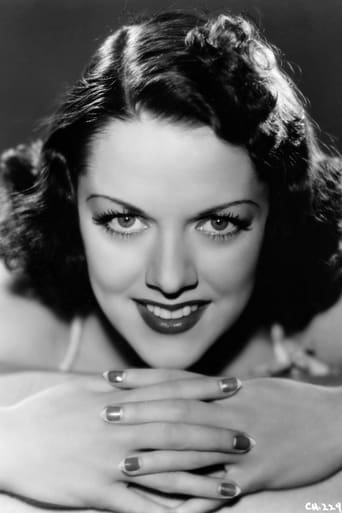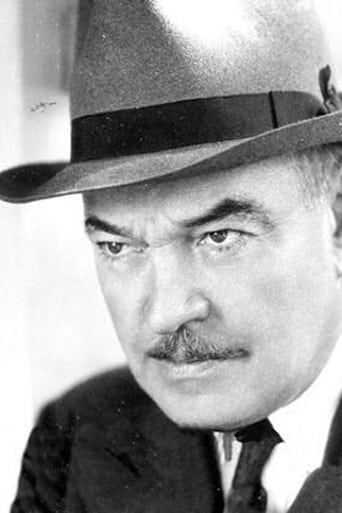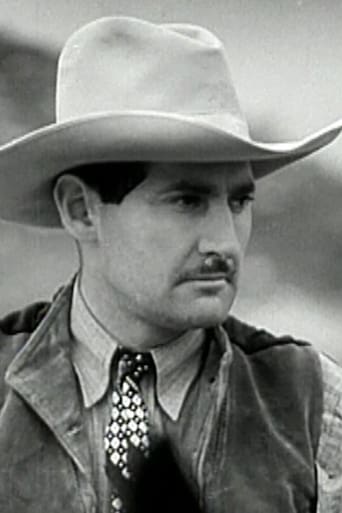SpecialsTarget
Disturbing yet enthralling
Gutsycurene
Fanciful, disturbing, and wildly original, it announces the arrival of a fresh, bold voice in American cinema.
Jakoba
True to its essence, the characters remain on the same line and manage to entertain the viewer, each highlighting their own distinctive qualities or touches.
Allissa
.Like the great film, it's made with a great deal of visible affection both in front of and behind the camera.
MartinHafer
During the 1930s, there was no cowboy more popular than Gene Autry, so it's not surprising that he'd flex his muscles a bit and demand a higher salary. Unfortunately for Gene, he picked the absolute worst time to walk off on his contract---as Republic Pictures then substituted a relative newcomer into his next planned picture, "Under Western Skies". That newcomer was Roy Rogers--and in a few years he'd surpass Autry in popularity. I am pretty sure Gene must have felt pretty foolish after this--especially since "Under Western Stars" turned out to be a very good picture and much better than Gene's usual output! The film begins with a bunch of ranchers at their wits end. The water company has jacked up the rates after they turned the land into a dessert. Now folks cannot afford to water their cattle and they are, naturally, hopping mad. Roy (along with Smiley Burnett) leads the fight against the water company and eventually they get the idea to run him for Congress. After all, their elected official is clearly in the pocket of the water company. Not surprisingly, Roy wins and goes to Washington to change things. Unfortunately, he learns that change comes slow and now he finds himself in the middle of what could be an all-out war between the ranchers and the water company. Can he manage to fix things AND still get the girl? The plot to "Under Western Stars" is the best thing going for it. It's unique--and that's something you can't say about many of the B-westerns! On top of that, the music is good and Roy's voice is about equal to Gene's. All around, one of Roy's best efforts as he hits a grand slam the first time up at bat, so to speak.
classicsoncall
Considering all the Roy Rogers films I've seen, this is the first time I've had the chance to view him in his first starring role. In his very prior appearance he was still being billed as Dick Weston in a minor singing role for the Gene Autry flick, "The Old Barn Dance". Roy became a big hit with this picture, so I was a little surprised to see the role he was given here, that of a politician who's not above using some unethical behavior to get legislation passed for his Congressional district back home.Roy gets support here from Smiley Burnette who sidekicked for the 'King of the Cowboys' in a host of films. The leading lady duties are handled by Carol Hughes, who also appeared with Gene Autry in a number of his pictures, then teamed with Roy again in 1940's "The Border Legion". But perhaps the best piece of trivia regarding Roy's career has to do with his famous horse. Following a salary dispute with Republic Pictures, Roy replaced Autry for this picture, and a stable that provided horses for the movie industry brought some of their best animals to the set for Roy to try out. One of them was Golden Cloud, a beautiful palomino that Smiley thought was pretty quick on the trigger. Trigger/Golden Cloud had one prior movie appearance - Olivia DeHaviland rode him as Maid Marian in 1938's "The Adventures of Robin Hood"! Now that's pretty cool.As far as the story goes, and aside from Roy's casting as a newly elected Congressman, it's pretty standard and formulaic for the era. The Great Western Water and Power Company has built a dam to the detriment of local ranchers, charging exorbitant rates for the use of the only available water supply. Seeking the aid of a committee chairman in Washington, Roy presents a film highlighting the drought conditions of his home district in Sage Valley. Trouble is, it was filmed in a different state, and Roy's actions are seen as unethical. On a trip back home, it looks like Roy further undermines his position by having the Congressional contingent hijacked in the middle of the desert with no water, just to show them what the locals have to deal with every day. Apparently Congressman Marlowe (Tom Chatterton) thought this was a pretty good ploy for a neophyte politician, and decided to back a water appropriation once he got back to D.C.In addition to his acting duties, Roy does a real nice job here with an assortment of musical numbers, including some yodeling in a couple of tunes. He's backed up a few times by a group called The Maple City Four. It all sounded pretty good to my tin ear, and I can see how Roy got to be such a hit right out of the box in his first major picture. On another trivia note, in 1948 Roy made a picture called "Under California Stars", and in an opening sequence, tribute is paid to his Tenth Anniversary in the movies.
bkoganbing
Considering Roy Rogers politics which favored the Christian Right, his debut film as a singing cowboy star is a most unusual one. He's essentially Billy Jack some thirty years ahead of time.Roy plays the son of a late Congressman who fought on behalf of the small ranchers who are being starved out because of the dam the water power company has built and the exorbitant rates being charged. Definitely a film of the New Deal times. After some typical direct cowboy action in dealing with the company Roy decides maybe Washington is the proper venue for dealing with the problem. He runs against flannel-mouth Congressman Dick Elliott who, thanks to some action by sidekick Smiley Burnette, gets dumped in a horse trough during his re-election campaign. A place more of our elected officials should visit unannounced.Roy's made wise to ways of Washington by Carol Hughes who is the daughter of the water power company president, but has a hankering for Roy just the same. Then it's back to the west for some more of the kind of riding and shooting action not usually normal with Congressmen.Under Western Stars was an interesting film in another way. Very soon such local country&western performers like Jimmie Davis in Louisiana, Wilbert Lee O'Daniel in Texas, and Glen H. Taylor in Idaho would be elected governors and/or senators from their respective states with just the kind of country singing campaign Roy does in this film. Maybe Under Western Stars had more influence than originally thought.This picture even got an Oscar nomination, for the song Dust for Best Song of 1938. The rather more well known Thanks for the Memory was the winner that year. But Dust is a highly dramatic item, sung by Roy as he's narrating a newsreel he put together about the dust bowl conditions in the west. Under Western Stars is a decent enough B western and definitely a worthy item for the King of the Cowboys to step up and claim his crown.






